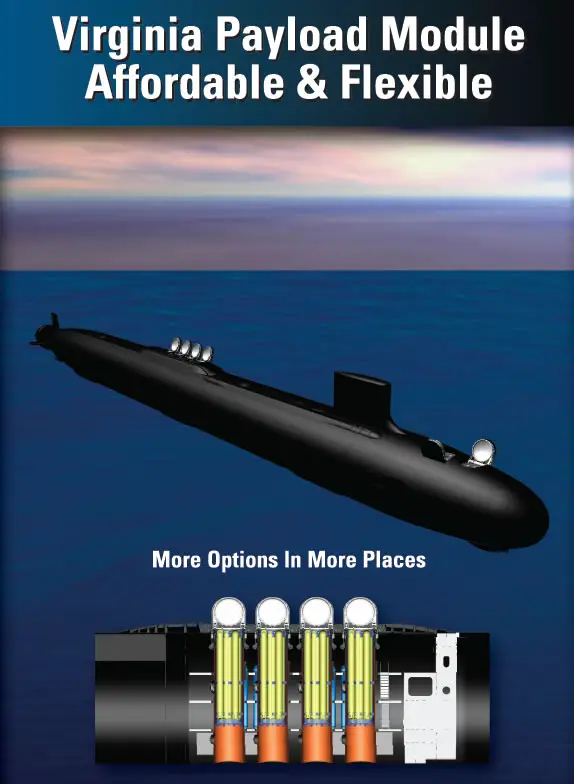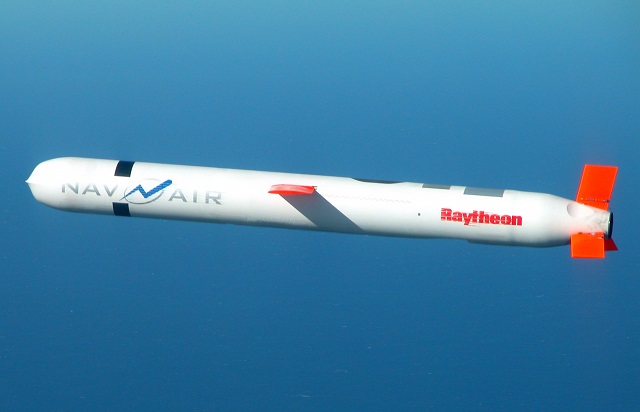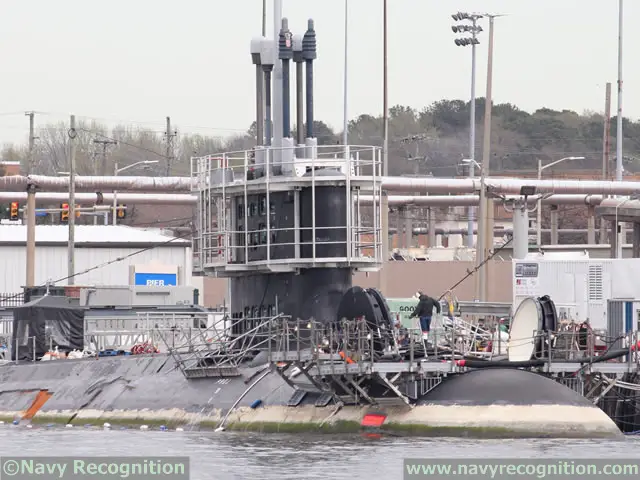Breaking news
U.S. Navy fires first Tomahawk cruise missiles from Block III Virginia-class Payload Tubes.
| 2017
|
|
|||
 Approximately 20 percent of North Dakota was redesigned as part of the Virginia Cost Reduction work done to lower acquisition cost and increase operational flexibility. The changes include a ship's bow redesign, replacing 12 individual launch tubes with two large-diameter Virginia Payload Tubes, each capable of launching six Tomahawk Cruise Missiles. Image: GDEB Approximately 20 percent of North Dakota was redesigned as part of the Virginia Cost Reduction work done to lower acquisition cost and increase operational flexibility. The changes include a ship's bow redesign, replacing 12 individual launch tubes with two large-diameter Virginia Payload Tubes, each capable of launching six Tomahawk Cruise Missiles. Image: GDEB |
|||
|
|
|||
|
The U.S. Navy continues to upgrade the Tomahawk Block IV's communications and navigation capabilities, while adding a multi-mode seeker so it can hit high-value moving targets at sea. These modernized Tomahawks are on track to deploy beginning in 2019 and will be in the U.S. Navy inventory beyond 2040.
Fired in combat more than 2,300 times, Tomahawk cruise missiles are used by U.S. and British forces to defeat integrated air defense systems and conduct long-range precision strike missions against high-value targets. Surface ships and other classes of submarines can carry more than 100 Tomahawks when needed. |
|||
|
|
|||
 A Tactical "Tomahawk" Block IV cruise missile, conducts a controlled flight test over the Naval Air Systems Command (NAVAIR) western test range complex in southern California. (U.S. Navy photo) A Tactical "Tomahawk" Block IV cruise missile, conducts a controlled flight test over the Naval Air Systems Command (NAVAIR) western test range complex in southern California. (U.S. Navy photo) |
|||





























